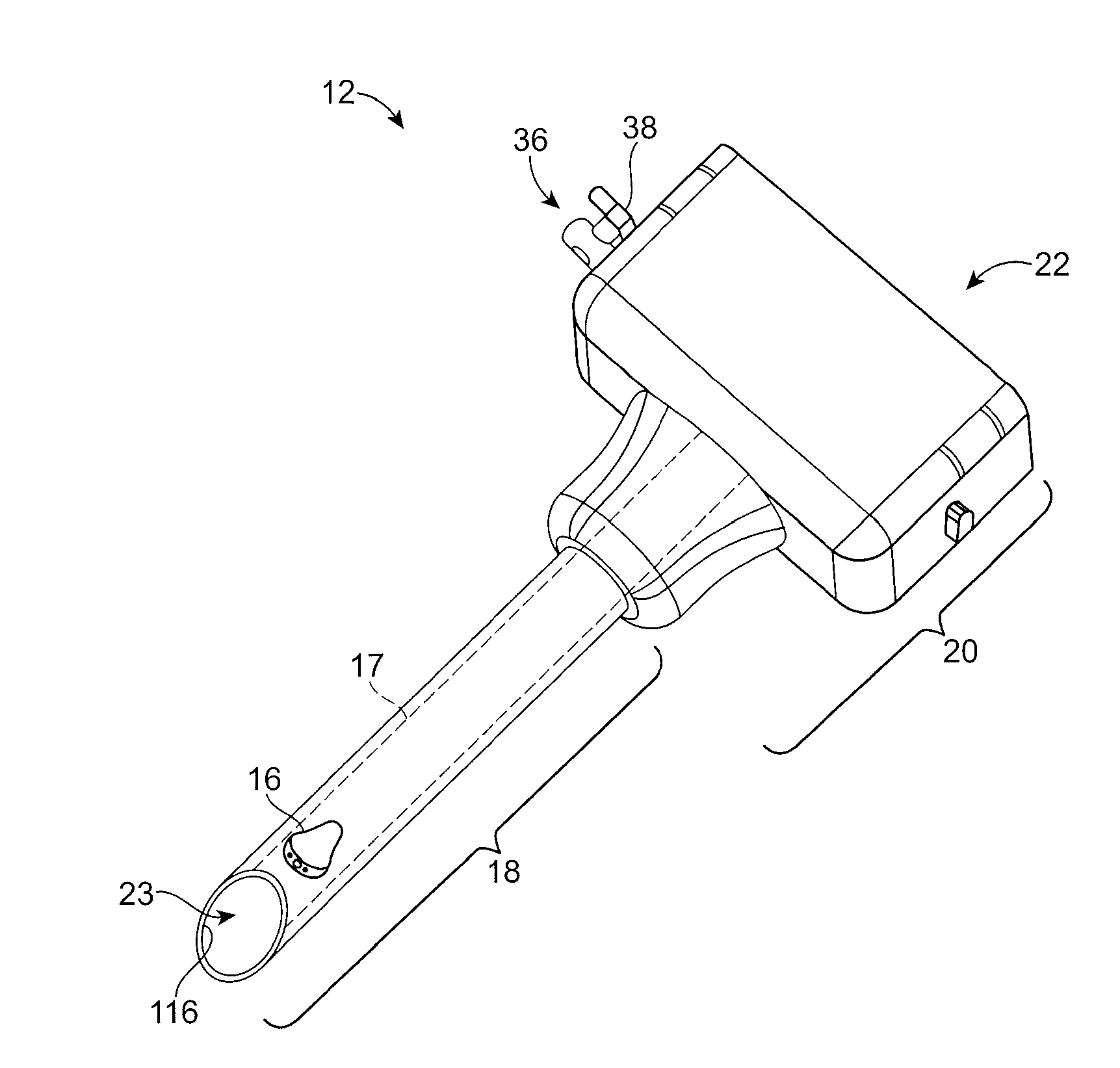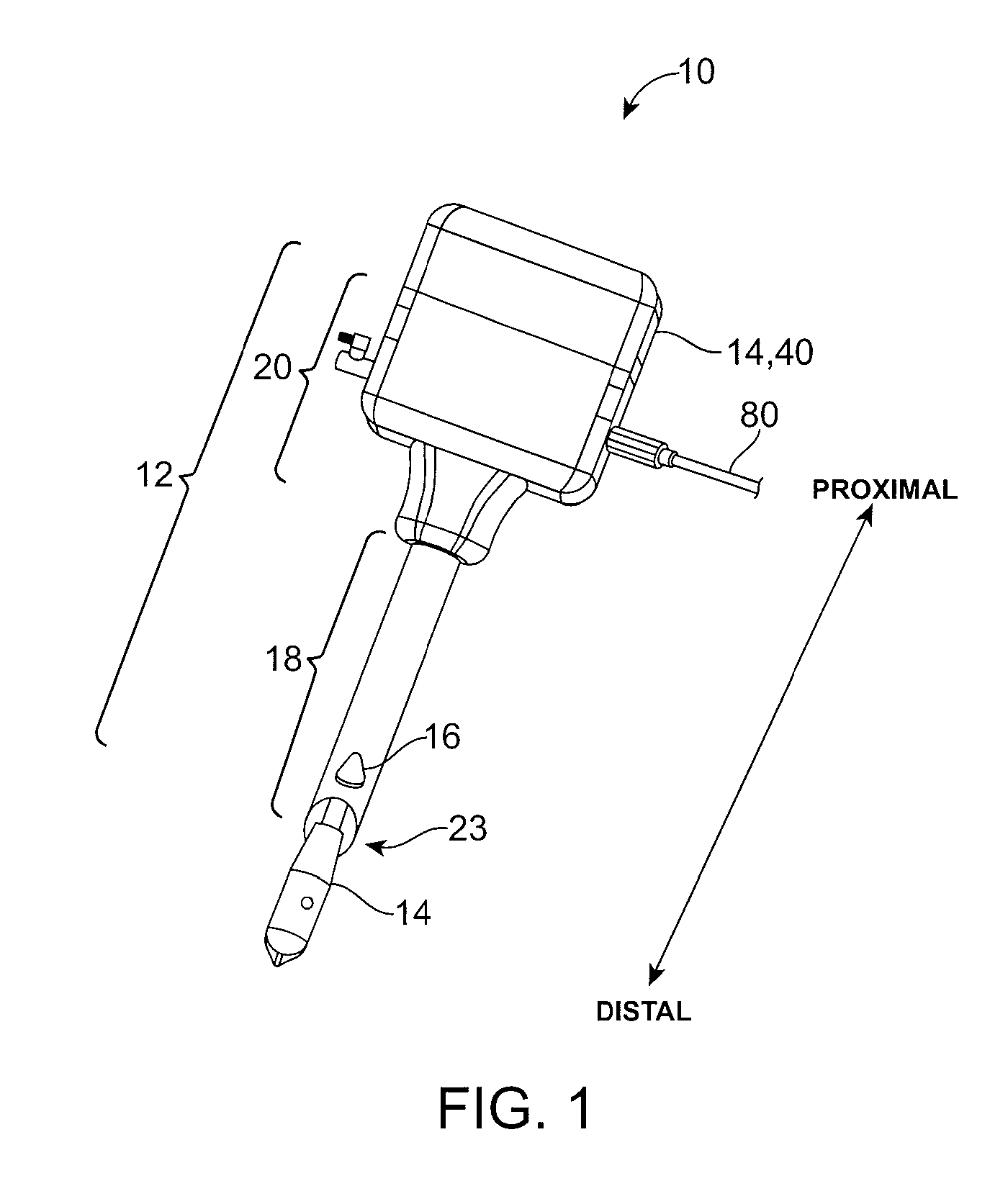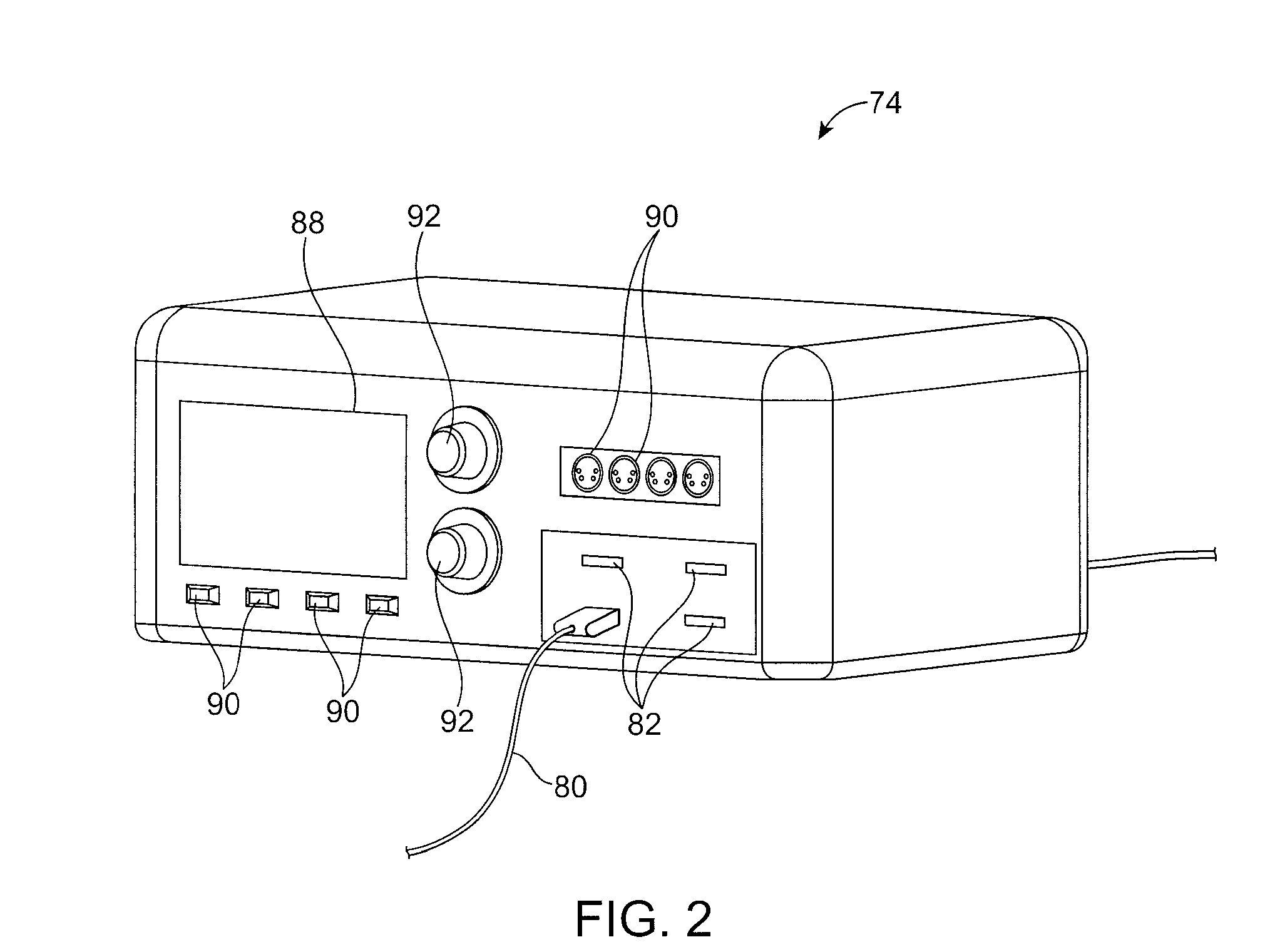Surgical access port with embedded imaging device
a surgical access port and imaging device technology, applied in the field of endoscopic devices, can solve the problems of reducing the risk of damaging abdominal organs, affecting the use of patients,
- Summary
- Abstract
- Description
- Claims
- Application Information
AI Technical Summary
Benefits of technology
Problems solved by technology
Method used
Image
Examples
Embodiment Construction
[0051]The term “endoscopic surgery” is a broad term that includes many varieties of surgeries such as laparoscopy. The scope of the present invention includes various types of endoscopic procedures, including laparoscopic surgery and other minimally invasive forms of surgery. The present invention also applies to any type of surgery that makes use of a trocar or cannula or similar devices.
[0052]In an embodiment of the present invention, a trocar is inserted into a cannula until it snaps into place as the projections on the trocar handle engage with complementary grooves on the corresponding sections of the cannula handle. An integrated imaging device, such as a camera, forms part of the cannula, trocar, or both. Corresponding electrical cabling for the camera is connected to connectors on an external control box and the cannula handle. The camera is powered on through the control box, and the control box begins to process the images captured by the camera and displays them on a moni...
PUM
 Login to View More
Login to View More Abstract
Description
Claims
Application Information
 Login to View More
Login to View More - R&D
- Intellectual Property
- Life Sciences
- Materials
- Tech Scout
- Unparalleled Data Quality
- Higher Quality Content
- 60% Fewer Hallucinations
Browse by: Latest US Patents, China's latest patents, Technical Efficacy Thesaurus, Application Domain, Technology Topic, Popular Technical Reports.
© 2025 PatSnap. All rights reserved.Legal|Privacy policy|Modern Slavery Act Transparency Statement|Sitemap|About US| Contact US: help@patsnap.com



